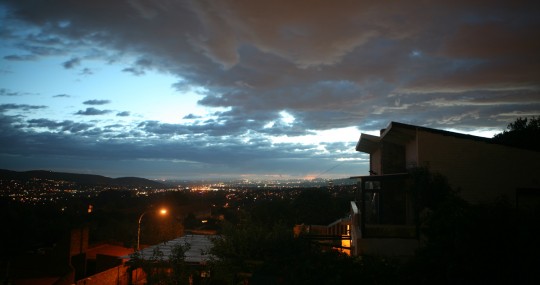
I flew to Johannesburg the night of April 14. In the morning of the 15, the plane stopped in Cape Town for an hour and an half, and around 1 p.m., I arrived at destination.
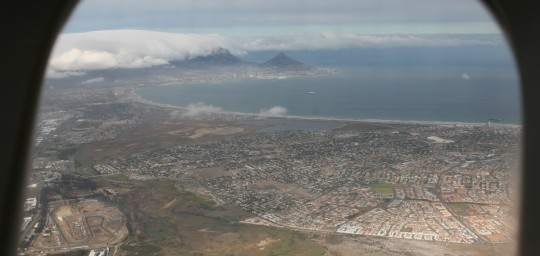
The country is getting ready for the World Cup, and the airport is a mess. As a result, I can’t locate the bus going to the city center, and have to get a ride with one of the many not-so-official cab you find there. It costs me US$30 to get in the city center.
The immense city is born in 1886 of a huge gold rush. The population is still divided between the highly secure primarily white suburbs and the blacks in townships and squatters camps. Dr. Joy Scott, one of the American followers of the blog invited me to spend few nights at the Wits University campus, one of the biggest universities in Africa and one of the rare multiracial enclaves during apartheid. I spend three days there, preparing my upcoming travel. I get some maps, and I try to trace the route ahead, getting information on the internet about dirt roads, river crossing and availability of visa at country borders. Message boards are useful, as you get first hand information from people who drove the roads recently.
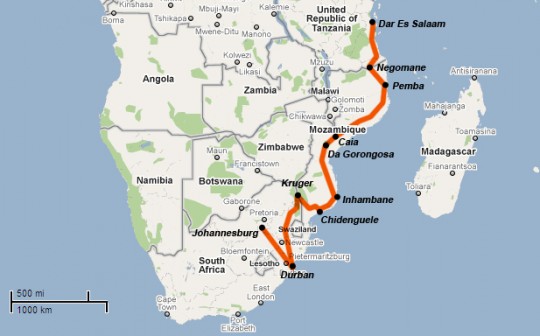
The route is getting more precise. I will get my truck in Durban, follow the coast and go north to the Kruger Park before crossing to Mozambique from there. Dirt roads should lead me south-east back to the coast at Chidenguele. I will travel north to the Parque Nacional da Gorongosa after enjoying the beaches around Inhambane.
In Caia, I will cross the Rio Zambeze and continue north-east and see Pemba on the coast before going back inland and cross the Rio Rovuma – marking the border with Tanzania – in Negomane, taking advantage of the new bridge. Few days after, I should be able to make it to Dar Es Salaam, the capital of Tanzania.
Days go by, and it is time for me to go visit Jerome Delay, another AP-colleague who I worked with in Paris, and is now the chief of photo for Africa. He lives in Johannesburg since 2005 with Benedicte Kurzen, photographer as well. You can see examples of the work they do here and here.
I spend few days with them, and Jerome help me out getting my stuff ready. He takes on his time to drive me around the city. I should have rent a car when I arrived at the airport, as you can’t navigate Johannesburg without a vehicle. The city is dangerous, and is reminiscent of Los Angeles, where you don’t see a soul walking the streets. Violence seems to have decreased in the last years, but when everybody tells you that you should not go out by foot on your own, you begin to feel a little bit paranoiac.
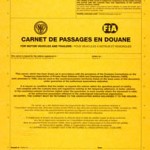 We go to the Automobile Association, where I have to make changes to my Carnet de Passage, the equivalent of my truck passport. Since I decided to change my route from the West to the East coast, I have to add the new countries to the document. They are really helpful there, and it is done in ten minutes. If you find yourself in a similar case, contact ¬¬ Meliza Chegwidden (MChegwidden [AT] AASA.CO.ZA), she is the best. Changes are free while it would have cost US$500 in North America.
We go to the Automobile Association, where I have to make changes to my Carnet de Passage, the equivalent of my truck passport. Since I decided to change my route from the West to the East coast, I have to add the new countries to the document. They are really helpful there, and it is done in ten minutes. If you find yourself in a similar case, contact ¬¬ Meliza Chegwidden (MChegwidden [AT] AASA.CO.ZA), she is the best. Changes are free while it would have cost US$500 in North America.
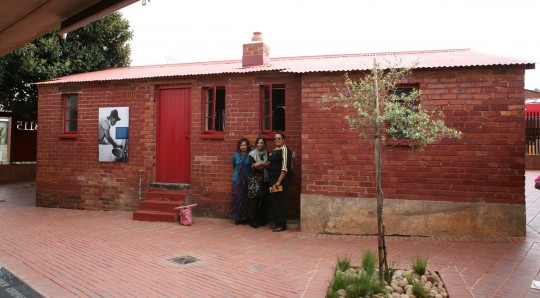
Meanwhile, I get new information from Jerome and his friends. It looks like getting visas for Sudan and Saudi Arabia is now easier. I also get confirmations that there are boats three times a week between Sudan or Eritrea to Saudi Arabia. It seems that it would work for me.
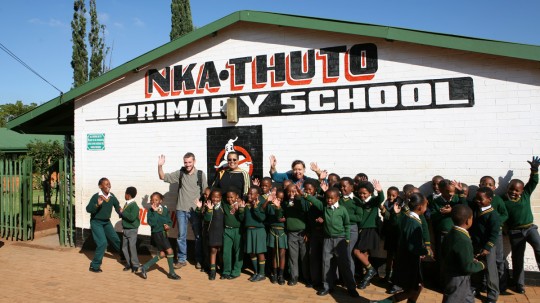
Also, I spend some time with Dr. Joy Scott and her colleagues who came from the U.S. They visit some schools in Soweto to observe methods of teaching, but primarily to tell them about the methods they specialize in. It is all about identifying gifted kids and to prepare a specific curriculum for them, a method unheard of in Africa where most efforts are directed into getting basic things rolling, like getting electricity in classrooms.
Soweto stands for South Western Township, where four millions people live in 140 square kilometers. It is now wealthiest than it has been, and easy to visit.
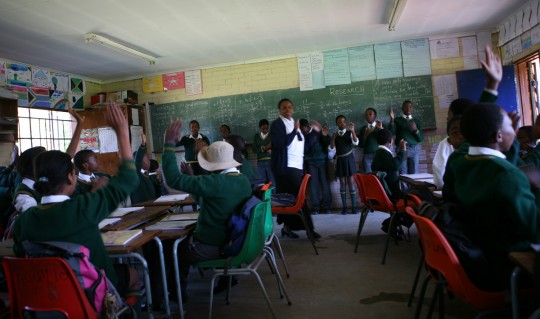
We spend time in the township and go to eat at world famous Wandie’s, a legendary restaurant close to Winnie Mandela’s mansion. On the menu, spicy oxtail stew and potjie kos which is beef and vegetable stew. Later, we visit the house Nelson Mandela lived before he got arrested in 1956, and hold our breath at the Hector Peterson museum, dedicated to keep the memories of the 1976 Soweto uprising fresh.
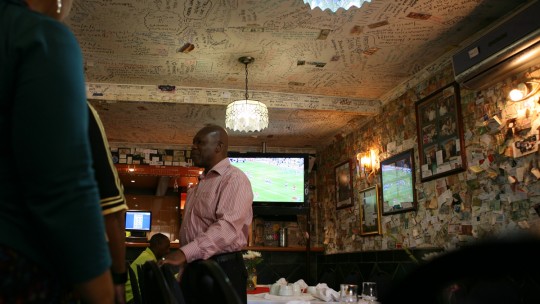
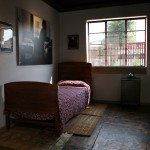
Every week on Thursday, there is a train leaving Johannesburg to Durban with sleeping options. I get a small compartment for less than US$40, and at 6:30 p.m., the train departs for its 13 hours trip. You can travel on the Shosholoza Meyl in a seat for US$10, but at this price, I may as well get some sleep, and be in good shape to attack all the formalities to free my truck.
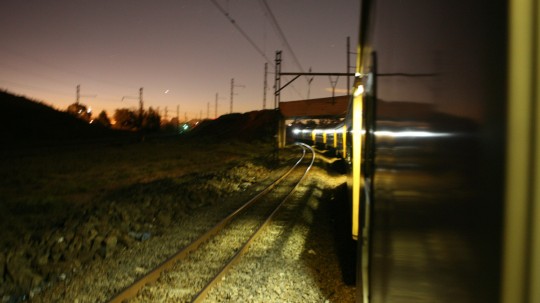
Although it is cold in the train, the trip is much nicer than taking the bus. Shortly after leaving Johannesburg, a bunch of people attack the train, throwing rocks and breaking windows. I hide under the table. The train continues. Looking at other people, it looks like it is business as usual.
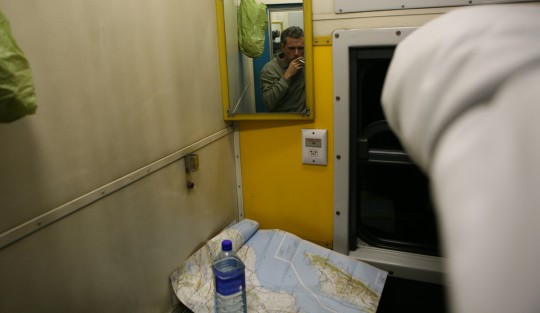
The night goes by fast as I read and get a very nice night of sleep. In the morning, I discover a shower in the car, and take advantage of this luxury.
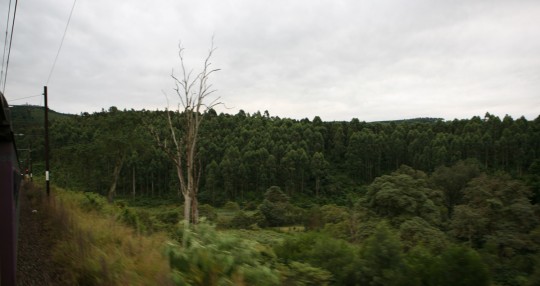
We arrive in Durban a little bit late, and I negotiate a cab ride to the sea front. My plan for the day is to sort out the customs with SARS, the equivalent of the American IRS. I knew it will not be simple, and of course it is not. Few hours later I had navigated several offices with no success. Nobody knows anything. Finally I have no other choice but get a clearing agent who will deal with them, as well as getting a warehouse space where I can unload my truck. I wanted to avoid that to save money, but there is no way around. The bad news is that it will cost me more than US$1,300 to pay the port dues, the container transportation, the warehouse and the agent.
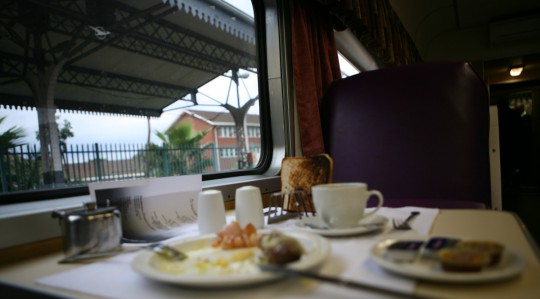
But there is no better options, so I try to stay positive, even when I learn that the boat transporting my truck is late, and will not make it to the port before the following Friday, instead of Monday. After that, the container will be stuck for the weekend. I will consider myself lucky if I can get my vehicle on the Wednesday after that. It will be costly, as I will have to go to a hostel for ten days. Again, there’s nothing I can do, so after I sort out everything I can, I just take a cab to the Nomads Backpacker hostel, which seems nice and cost US$16 a night.
There, I will wait and get ready for more trouble, as I know getting the truck out will not be as easy.
For the kind of journey I am undertaking, I learned soon enough one quality is more important than courage or strength. Patience.

Hi Nick, I am captivated by your story! I am a 65 year old Grandma that just returned from my second trip to China…not touristy trips…outreaches… 15 hour train rides from Beijing. I enjoy being out of my comfort zone.
I am so happy/excited for you and I find myself checking often…sort of like a worried Mama and so proud of you at the same time.
I appreciate the time it takes for you to be blogging this adventure…not easy~
Be well and Happy Trails~
Kathleen
Nick,
Good luck on the next leg of your trip. Be safe and hope to hear about all you adventures.
Judy
Park Ridge, Illinois
Nick,
Nice adventure. Safe journey.
Abdi
Chicago,IL
Go Nick!
Hey Nick,
So glad to see an update…and looking forward to the newest adventures and stories…..best of luck getting to your next destination.
Cheers,
Mimi
Texas
NICK,
I have been following your journey since day 1. I read everything. Thanks for sharing. I am loving it.I am praying for tour safrty………..
I’ve been following your trip from the start. Our little home town paper here in Florida had a full page story on you one Sunday! I’m praying for your safety as you travel Africa and the Middle East. Have fun!
i wanted to tell you you are cool